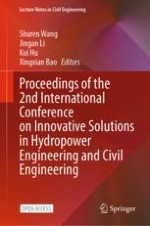1 Introduction
2 Theoretical Model of Horizontal Bearing of Pile Foundation in Sloping Ground
2.1 Analysis of Pile Foundation Deformation Mechanism Considering Slope Effect
2.2 Theoretical Analysis Model
3 Reliability Analysis Method of Pile Foundation Based on Kriging Model
3.1 Horizontal Bearing Performance Function of Pile Foundation in Sloping Ground
3.2 Active Learning Kriging Mode
3.3 Reliability Analysis Method of Pile Foundation in Sloping Ground
4 Reliability Analysis of Pile Foundation in Sloping Ground
4.1 Calculation Conditions and Parameters
4.2 Analysis of Calculation Result
Failure mode | Analysis method | Number of numerical analyses | Failure probability (‰) | Coefficient of variation | Relative error |
|---|---|---|---|---|---|
Material yield | Kriging | 234 | 3.81 | 0.0114 | 2.1% |
MCS | 2 × 106 | 3.73 | 0.0116 | – | |
Excessive horizontal displacement | Kriging | 311 | 5.01 | 0.01 | 0.8% |
MCS | 2 × 106 | 4.97 | 0.01 | – |
